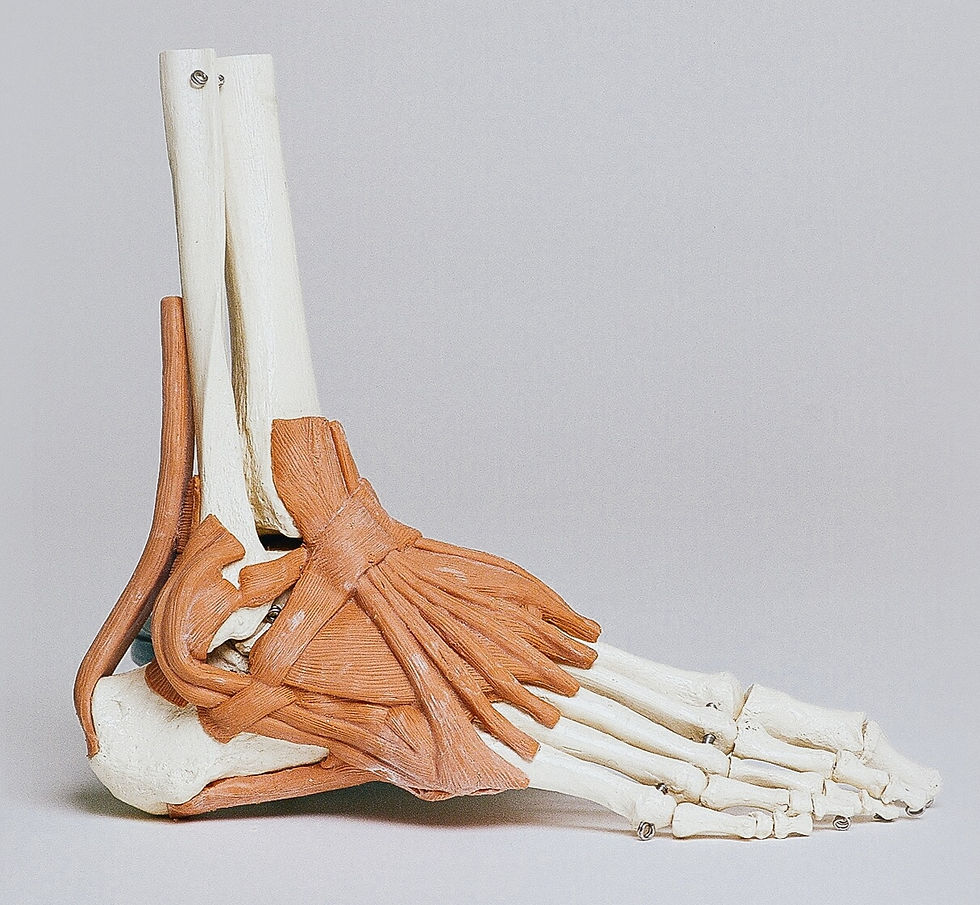Could My Diet Really Affect How Long it Takes to Heal From Injury?
- Dr. Morgan Gepfrey

- Aug 25
- 3 min read
How Long It Takes to Heal from Injury

Many people coming into our office are dealing with the same type of injury: one that involves tendons or ligaments.
In the human body, tendons are responsible for attaching muscle to bone. Examples of tendons in the body are the Achilles Tendon, Patellar Tendon, or Biceps Tendon. While traumatic injuries to tendons can occur, most often tendons are injured during overuse activities- running, golfing, working in the garden, etc.
Ligaments on the other hand are responsible for attaching bone to bone. A few examples of ligaments include Talofibular Ligament, Medial Collateral Ligament, or Deltoid Ligament. Ligaments are most commonly injured when a joint is overstretched- think rolling an ankle or hyperextending the knee.
Most of the time, non-traumatic injuries will begin healing on their own within the first few days. Common advice is to rest the area, add in gentle movement as tolerated, and heat or ice for comfort. Many overuse injuries will heal with the above strategies in 2 to 4 weeks (traumatic injuries will depend on severity).
My Injury Isn't Healing; What's to Blame?
Do you feel like you've followed the advice about rest, ice/heat, and easy movement and you're just not getting any better? It may not be the joint or muscle itself that it to blame. A silent culprit that could be hindering your progress has to do with your body's internal environment, or metabolic health.
METABOLIC SYNDROME
Metabolic Syndrome isn't necessarily a disease but a term to refer to the combination of metabolic health markers that may be setting you up for poor healing. The combination includes:

High Blood Pressure (Hypertension)-
The criteria for high blood pressure has recently been updated and now includes readings that are 130/80mmHG or above.
High Cholesterol (Hyperlipidemia)-
The criteria for high cholesterol includes cholesterol results of 240 mg/dL (elevated is considered >200 mg/dL). Another indicator is LDL levels above 160mg/dL (borderline high is >130mg/dL)
Diabetes Mellitus Type II (Hyperinsulinemia)-
The criteria for diabetes is fasting glucose levels above 126mg/dL and A1C of 6.5% (pre-diabetes starts at 5.7%).
Why Does Metabolic Syndrome Lead to Longer Healing Times?
When conditions such as high blood pressure and diabetes are present, it sets the body up for failure. Previous research(1) has shown that patients with a history of metabolic syndrome and an Achilles Tendon injury show signs of:
Increased tendon stiffness
Reduced capacity to store and release elastic energy during gait
Higher hysteresis, meaning more energy was lost as heat
Increased muscular demand during walking, contributing to fatigue and reduced efficiency
Best Recommendations to Speed Up Healing
In order to heal optimally, it is important to set yourself up for the best chance of success and here are a few recommendations to help you on the journey.
Eat According to a Mediterranean Lifestyle
Often in our culture we are consuming an excess of highly processed foods containing added sugars and fats for flavors and this does us a disservice. Switching to a cooking and eating style similar to those around the Mediterranean Sea helps to ensure we are ingesting adequate amounts of essential fatty acids (fatty fish and oils), fruits, vegetables, and nuts. This style of eating will naturally help to bring down blood glucose levels, elevated blood pressure, and high triglycerides.

Focus on Safe Movements
Depending on the type and severity of injury, it is important to discuss with your medical provider what form of safe movement in which you can partake. I am often advising patients to work through ranges of motion of the joint in question to prevent prolonging the injury unnecessarily by unintended guarding. A great place to start is to work on increasing your daily step count. My general rule of thumb (especially if you have a fitness tracker) when increasing your step count is to try for hitting 1000k more steps than your daily average. Try hitting that everyday for a week, and as long as there is no pain, add another 1000k the following week until you're averaging 8-10,000 steps/day.
Supplementation
Certain supplements may also be beneficial, including MSM, collagen, amino acids, vitamin C, bromelain, glucosamine, and Boswellia—all of which have emerging research supporting their role in connective tissue health.
References:
Petrovic M, Maganaris CN, Deschamps K, Verschueren SM, Bowling FL, Boulton AJ, Reeves ND. Altered Achilles tendon function during walking in people with diabetic neuropathy: implications for metabolic energy saving. Journal of applied physiology. 2018 May 1;124(5):1333-40.





Comments